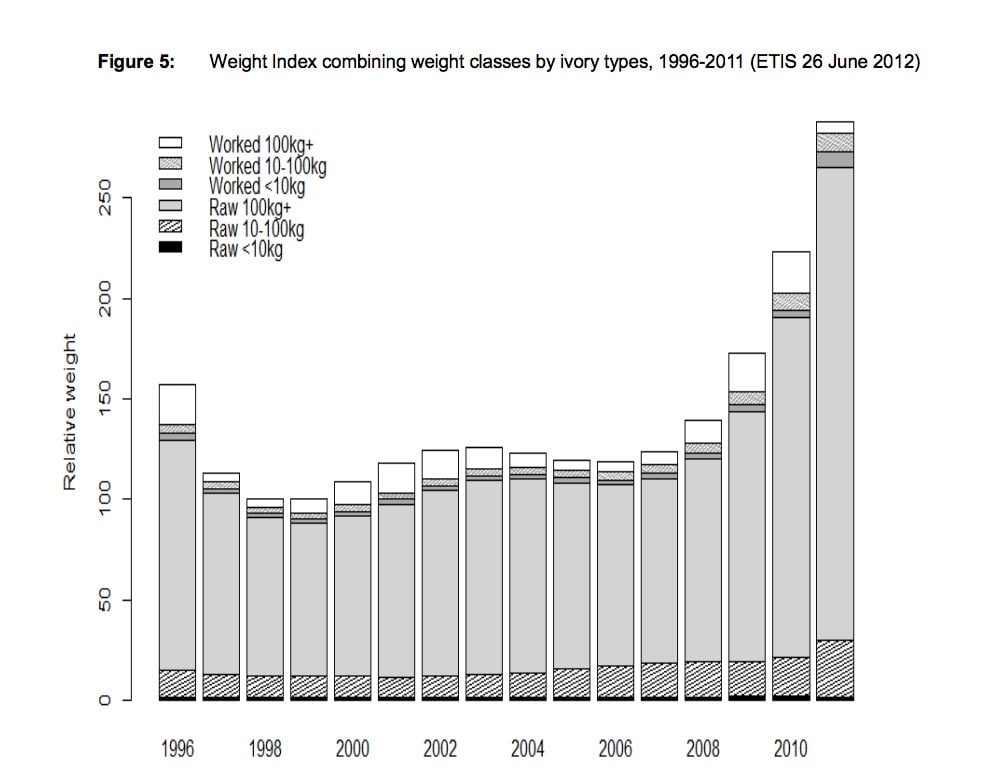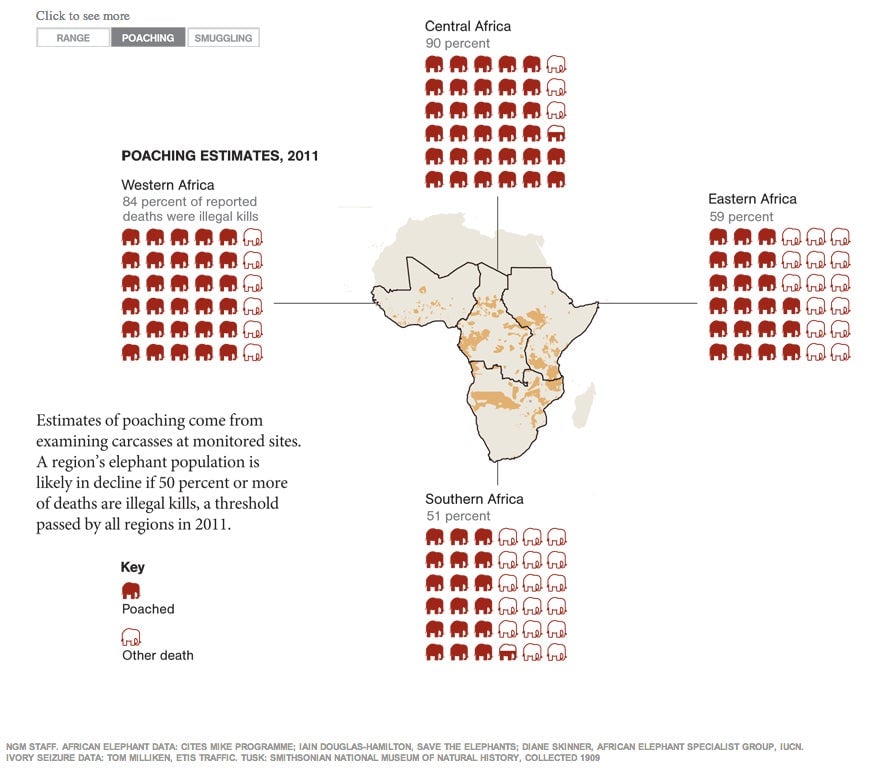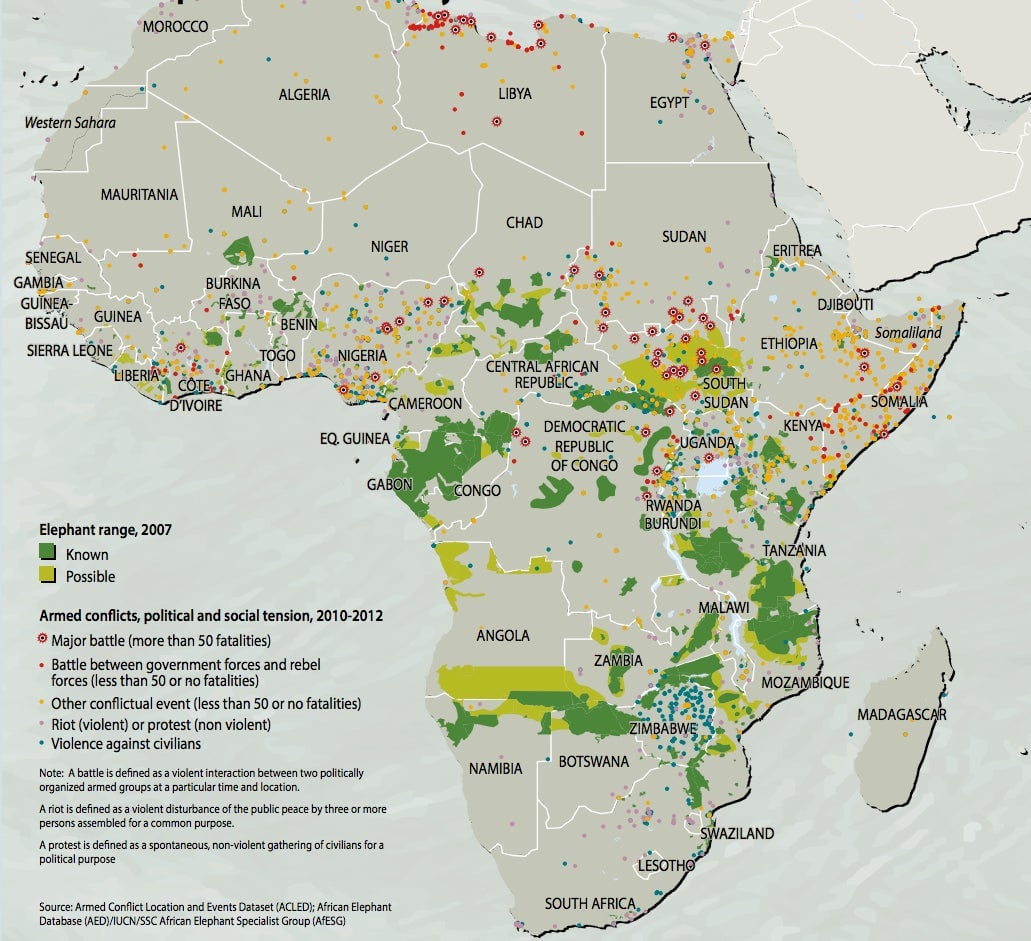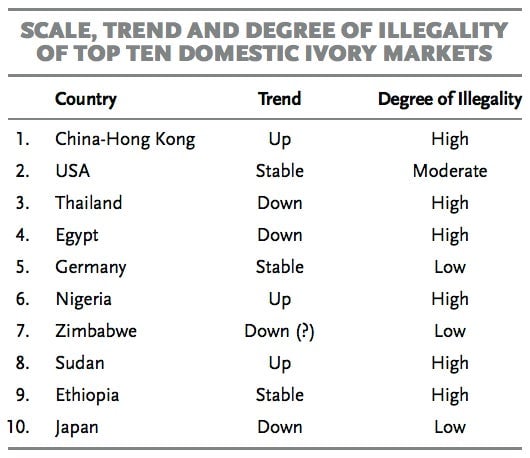China’s lust for ivory isn’t just slaughtering elephants. It’s also destabilizing Africa
Hong Kong customs officials just confiscated a Nigerian shipment of 1,120 elephant tusks—part of a haul of rhino horns and leopard pelts that totaled around $5.3 million in value. In July, HK customs seized 1,148 tusks worth $2.3 million in a shipment from Togo, and confiscated another 780 tusks worth $1.14 million back in January.


Hong Kong customs officials just confiscated a Nigerian shipment of 1,120 elephant tusks—part of a haul of rhino horns and leopard pelts that totaled around $5.3 million in value. In July, HK customs seized 1,148 tusks worth $2.3 million in a shipment from Togo, and confiscated another 780 tusks worth $1.14 million back in January.
Those three shipments alone add up to at least 1,525 dead elephants—scary, considering as few as 400,000 elephants are left on the planet. Since ivory is traded illegally, the best way to capture poaching trends is to look at customs seizures, which suggest a sharp recent rise in killings:

Here’s where they’re coming from, via National Geographic’s good interactive map:

Stopping this slaughter might sound like the cause of people who might flour-bomb Kim Kardashian. But it’s also an urgent global security priority.
A recent United Nations report on security in Central Africa highlighted elephant poaching as “an important source of funding for armed groups” (pdf), including the Lord’s Resistance Army (LRA), the militant guerrilla group led by the notorious Joseph Kony. Other beneficiaries of the tusk trade include al Qaeda’s al-Shabab arm in Somalia and the Janjaweed in Sudan.

It’s not just a one-way business. Poachers are now “using more and more sophisticated and powerful weapons,” some of which may be coming from Libya, said the UN report.
The trade not only funds murderous guerrilla groups, but it also threatens legitimate businesses built around elephants—notably tourism, an important source of income for many African countries.
What’s driving this business? Increasingly, China, where “white gold” is prized as a status symbol. In the 1990s, China drove only around 3%-4% of global demand; it’s now responsible for around 40% (paywall). The Convention on International Trade in Endangered Species estimates that 83% of the Chinese ivory trade since 2006 occurred in the last three years (pdf, p.14).
Behind this demand is China’s growing wealth and enthusiasm for luxury products. When it comes to its gift-giving culture, ivory is a popular alternative (paywall) to now-shunned luxury items, as National Geographic details.
Another problem is that some of those ivory hunks are technically legal. China licenses 35 carving factories and 130 ivory retailers to sell ivory ostensibly purchased from existing stock. The Chinese government has been cracking down on the illegal trade, but many suspect its legal trade supports the black market (for instance, that’s why the Philippines just destroyed its stockpiles). And as ivory prices skyrocket—they tripled in the space of a year—that’s only picking up:

So are these luxury-goods buyers ruthless fiends? Not necessarily, explains Brian Adams of the non-governmental organization WildAid, which is perhaps best known for its anti-shark finning campaign involving basketball star Yao Ming (here’s his blog). A WildAid survey conducted in Beijing, Shanghai and Guangzhou revealed that many didn’t know that elephants had to be killed to get their tusks. “The answers were pretty eye-opening,” Adams tells Quartz, noting a high degree of “naiveté to where these products originated.”
More worrisome, though, might be that some Chinese authorities who do know that ivory comes from dead elephants don’t seem especially concerned.
“Most poachers in Africa are Africans,” Meng Xianlin, director of Chinese government representative to CITES, told the state-run People’s Daily. “Locals suffer from poverty and poaching can be a lucrative business for them. The ultimate solution is to raise their living standards and income.”